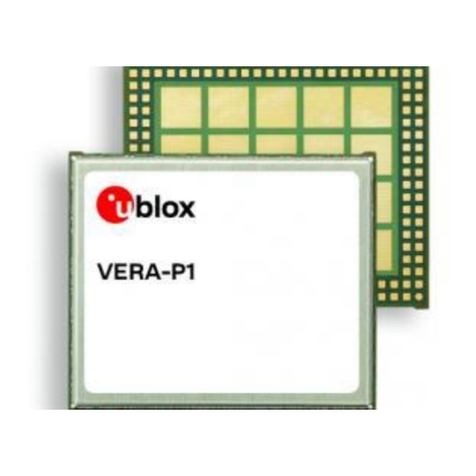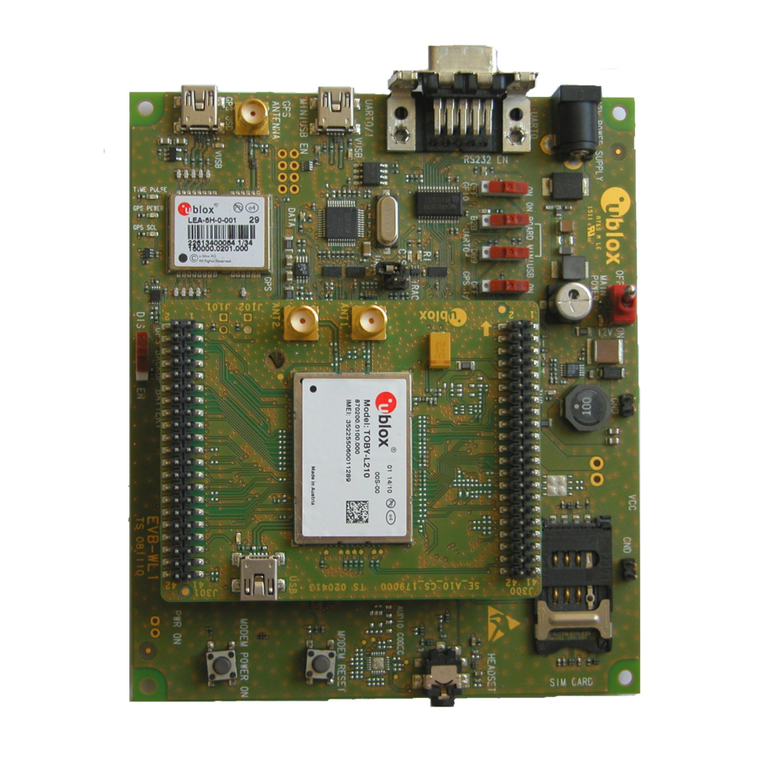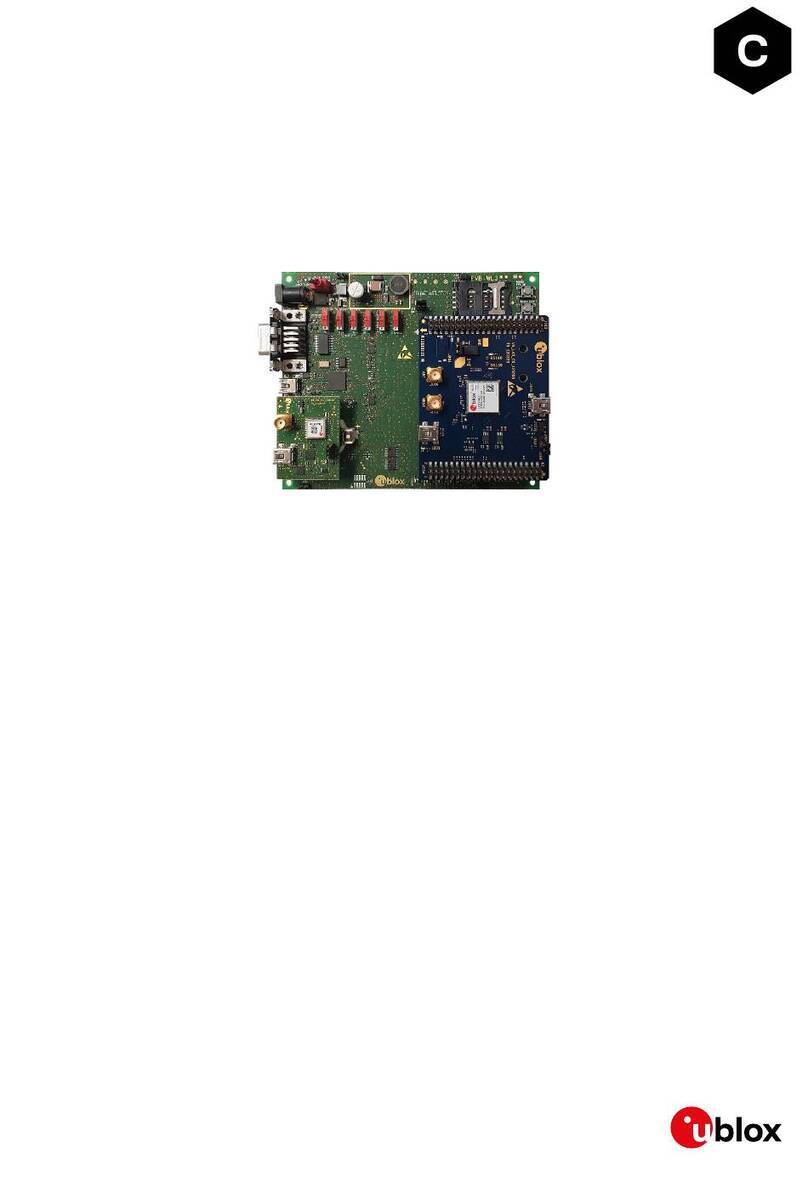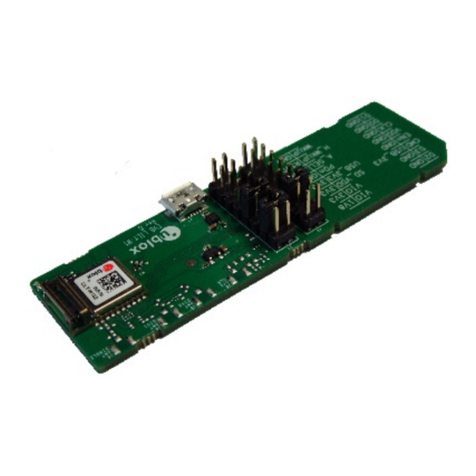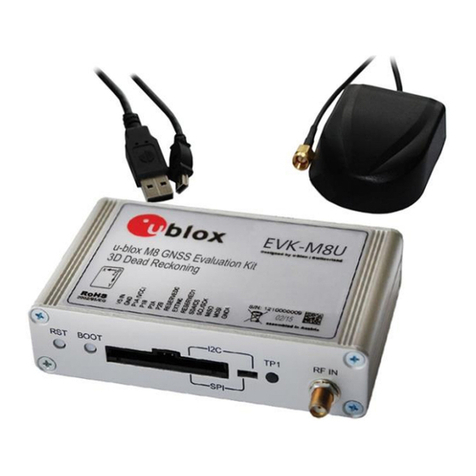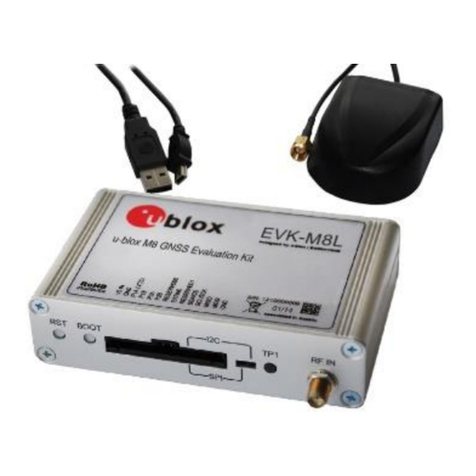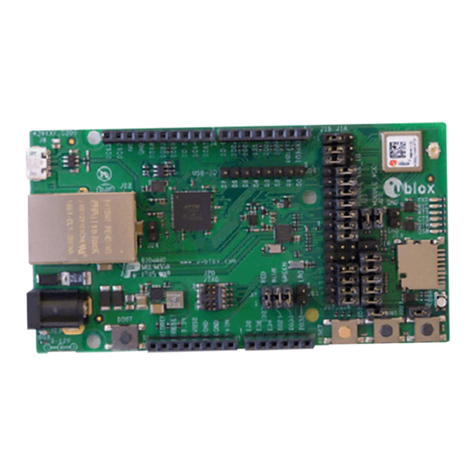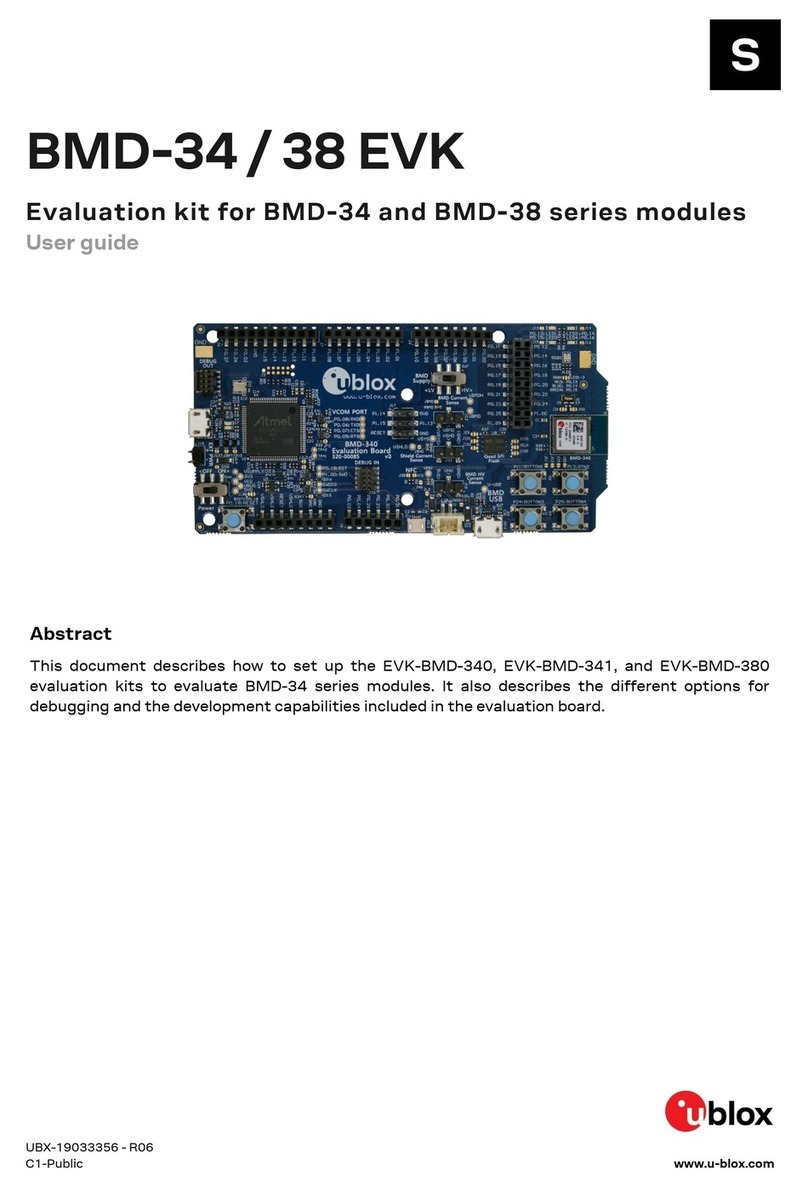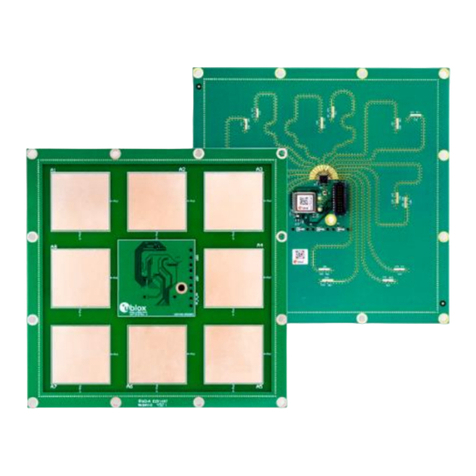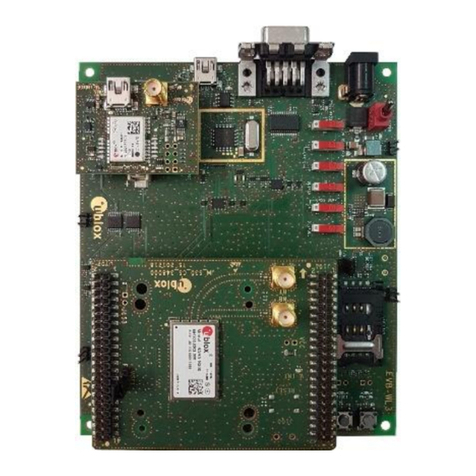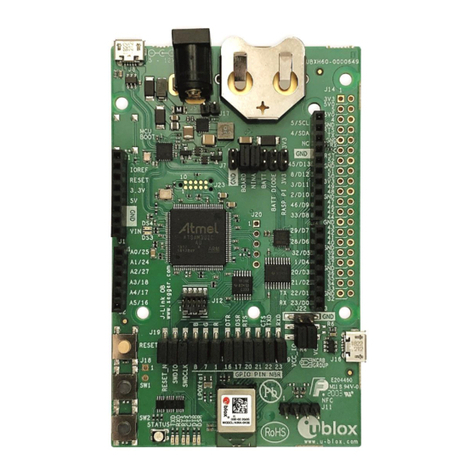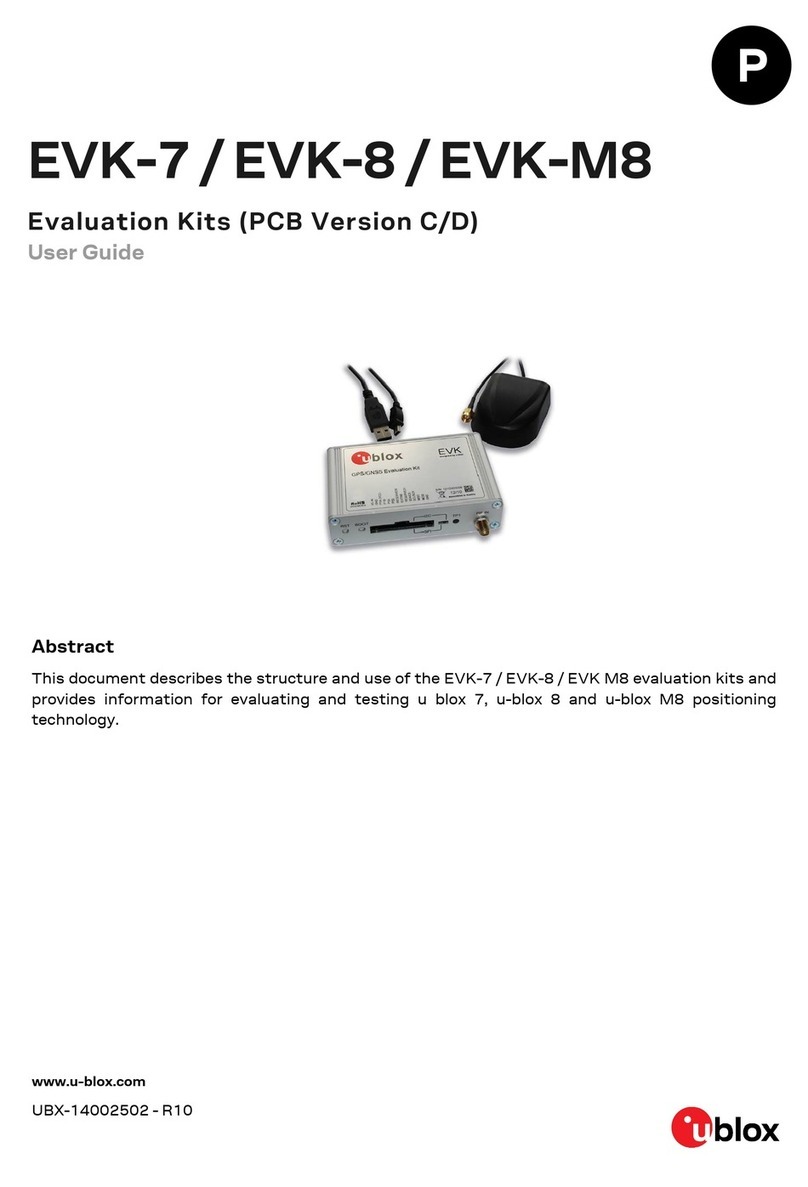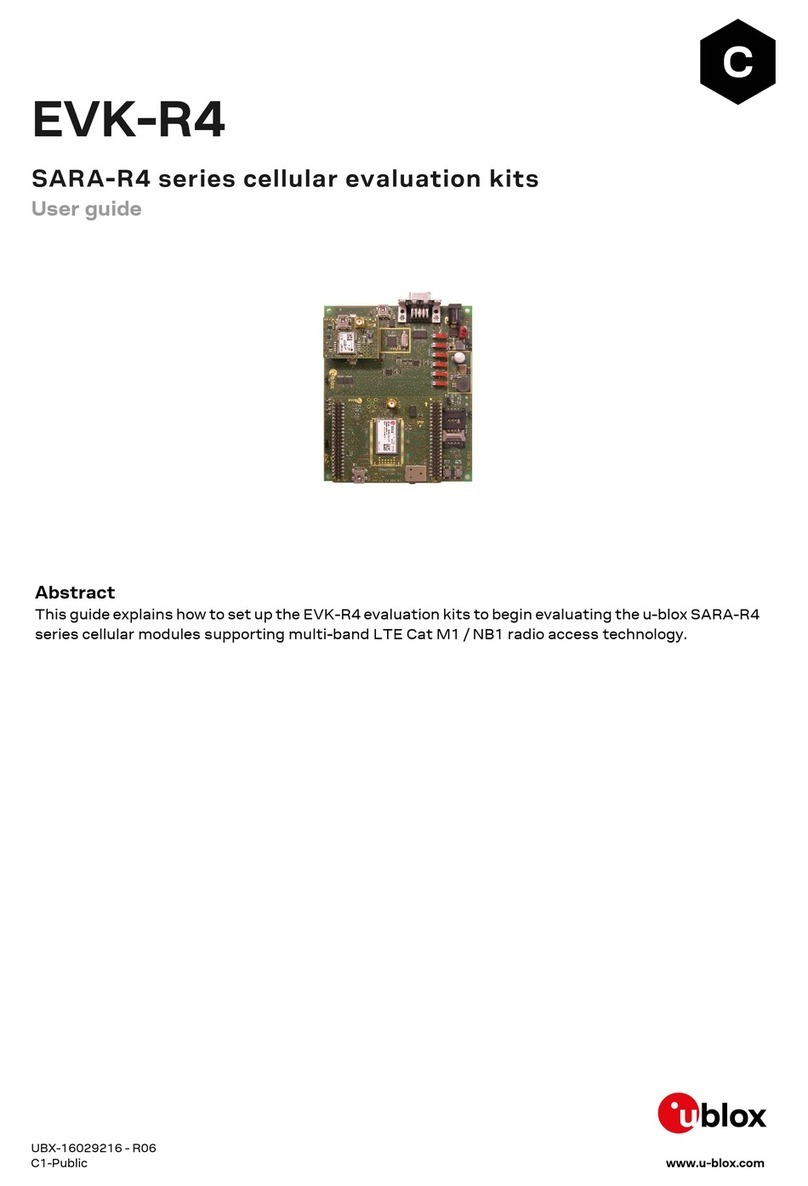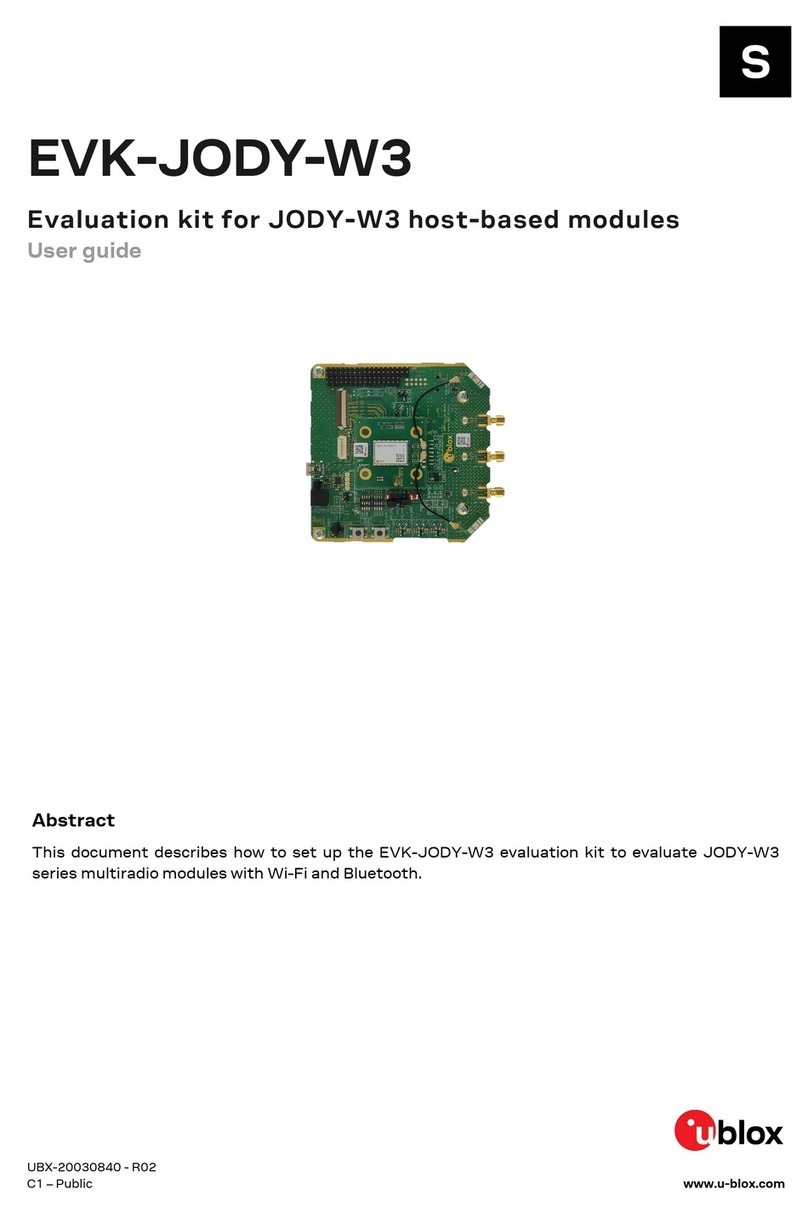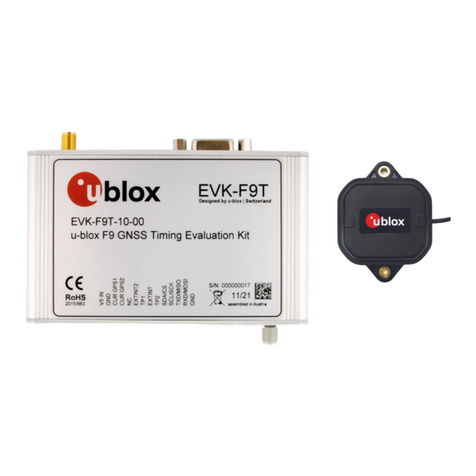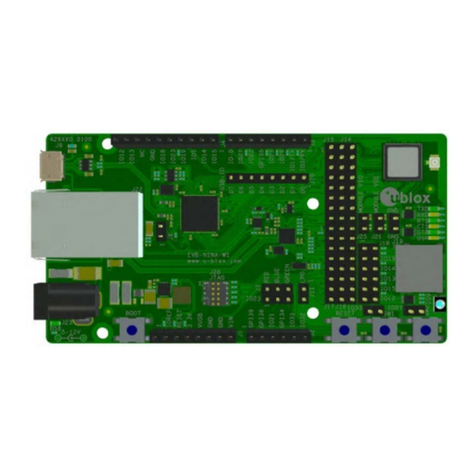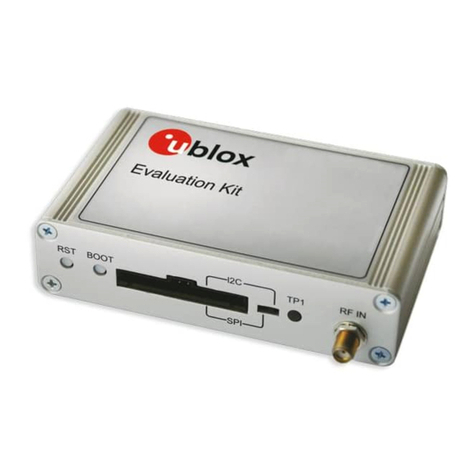
EVK-U20, EVK-U23 - User Guide
UBX-13001794 - R07 Early Production Information Starting up
Page 8 of 21
1.8 Board setup and settings
1Insert a SIM card into the SIM card holder (J300).
2Connect a cellular antenna provided with the evaluation kit box to the Cellular main antenna SMA
connector (J501 on ADP-U2xx, RF input/output for transmission and reception of 3G/2G RF signals).
3In case of EVK-U23, connect a cellular antenna provided with the evaluation kit box to the Cellular Rx div
antenna SMA connector (J500 on ADP-U2xx, RF input for reception of 3G RF signals as per DL Rx diversity).
Place the Rx div cellular antenna far enough from the main cellular antenna (should be more than 20 cm).
4If the GNSS functionality is required, connect the GNSS antenna provided with the evaluation kit box to the
GNSS antenna SMA connector (J103 on ADP-GNSS). Put the GNSS antenna in a place with good sky view.
5Connect the AC / DC +12 V power adapter provided with the evaluation kit box to 9 –18 V Power Input
connector (J400 on EVB). LED DL401 lights blue.
6Be sure to insert a jumper socket on the Cellular VCC supply jumper (J404). This provides the connection
from the 3.8 V output of the supply circuit on the EVB to the VCC input of the module.
7To enable board power supply, turn Main Power switch (SW400) to ON position. LED DL400 lights green.
The cellular module switches on.
If the cellular module is powered off using AT+CPWROFF command, press the Cellular Power ON button
(SW302) or the Cellular Reset button (SW303) to switch on the module again.
8For communication via UART interface of the cellular module, the following connections are allowed and
can be alternatively enabled in a mutually exclusive way (see Table 5 for switch position and LED status):
a. Connect a USB cable to the mini USB connector (Cellular USB, J501 on EVB), LED DL501 lights blue
b. Connect an RS232 cable to DB9 connector (Cellular RS232, J500 on EVB)
When a USB cable is connected to the mini USB connector, two COM ports are enabled in Windows (the
numbering of the COM ports can be seen via the Windows Device Manager). The serial port for AT
commands is available over the first numbered COM port opened by the driver.
Access to cellular UART over the Cellular USB (UART) mini USB connector (J501)
Access to cellular UART over the Cellular RS232 (UART) DB9 connector (J500)
Access to cellular UART on DIL Board-to-Board connector on the adapter board:
cellular UART detached from USB (UART) J501 and RS232 (UART) J500 connectors
Table 5: Cellular UART interface configuration and routing
9For communication via USB interface of the cellular module, connect a USB cable to Cellular Native USB
connector (J313 on ADP). LED DL300 on ADP lights blue.
After the end of the module boot, the COM ports listed in Table 6 are enabled by the Windows USB driver
(details as the numbering of the ports can be seen via the Windows Device Manager)1:
u-blox Modem USB1 AT and data
AT command interface and data communication
u-blox Modem USB2 AT and data
AT command interface and data communication
u-blox Modem USB3 AT and data
AT command interface and data communication
u-blox Modem USB5 Primary Log
u-blox Modem USB6 Secondary Log
Remote SIM Access profile
Table 6: COM-ports in use for Cellular Native USB ports
1A message of “driver installation fail” may appear on Windows if the USB cable has been connected before the end of the module boot,
but this can be ignored as the normal operating functionality of the module will be anyway available after the end of the module boot.

